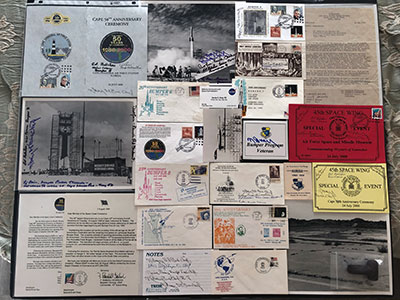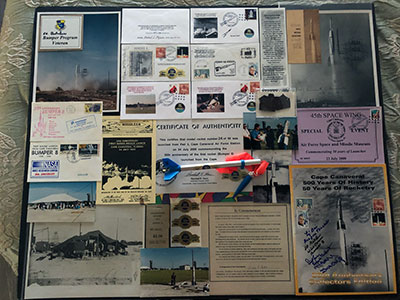Ken Havekotte
Member Posts: 3060
From: Merritt Island, Florida, Brevard
Registered: Mar 2001
|
 posted 07-24-2020 11:37 AM
posted 07-24-2020 11:37 AM
   
Hard to believe that's its been 70 years ago today (July 24) that the first Cape rocket launch took off on a partly cloudy Florida summer morning. Little did anyone know at the time such a rocket would propel unknown Cape Canaveral and later NASA's Kennedy Space Center into the Missile and Space Age.Known as Bumper 8, it was a modified German ballistic missile with a U.S. Army WAC Corporal research rocket mounted to its nose cone which served as a second stage. The liquid-fueled V-2, the world's first long-range ballistic missile, had been used by the Germans during World War II as a guided missile weapon. It was the first known man-made object to reach the edge of space in 1942. The 46-foot long V-2 would become the immediate ancestor, or "granddaddy," of all larger launch vehicles used at the dawn of the Space Age. Attached to the top of the V-2 booster was the WAC Corporal, America's first high-altitude sounding rocket, which became the "workhorse" of our nation's early rocket research program of the post-World War II period of the 1940's. The pencil-shaped 16-foot long unguided rocket used liquid propellant and developed a thrust of 1,500 pounds for 50 seconds.  It was long believed that the initials of "WAC" stood for either "Without Any Control," or "Without Altitude Control," because the rocket had no stabilization and guidance systems. But others had thought WAC was meant to be kind of honor for the "Women's Army Corps" created in 1942 by the U.S. Army during the second world war. But at a later date, when the name had been nearly forgotten, the Douglas Aircraft Company explained that the three letters in fact stood for "Without Altitude Control." As the WAC Corporal stayed atop the V-2 for the first minute of flight, it then shut down its engine after running out of fuel, which provided a high-altitude "bump" for the WAC second stage. This is why the V-2 main booster was given the name "Bumper" as it propelled the second stage away from it. The Bumper program had been the idea and proposal of Army colonel Holger Toftoy in July 1946. He played a key role in bringing the German V-2 rocket development group to the United States and urged his Army superiors to establish a bigger rocket development facility, which became Redstone Arsenal in Hunstville, Alabama, that later included the Florida Cape Canaveral firing range. Tofty retired from the Army in 1960 with a rank of major general after a distinguished career as an expert in ordnance and missiles. Project Bumper, a General Electric Company research program under contract to the U.S. Army that studied the high altitude flight dynamics of in-flight rocket stage ignition and separation, was our nation's first large two-stage rocket program that consisted of a total of eight Bumper-WAC missile firings. The first six Bumper-WAC rocket combinations together were test flown from 1948-49 from the White Sands Proving Ground (later Missile Range) in New Mexico; the final two (Bumper 8 and 7) were launched from the Cape, formally known as the Joint Long Range Proving Ground (JLRPG), only days apart on July 24 and 29, 1950.  In celebration of that first rocket flight from the Cape, I wanted to share what little is known pertaining to postal covers and related memorabilia. To the best of my knowledge, there are no actual Bumper 8 launch day covers from July 1950, either at nearby Artesia or any other area post office. The first Bumper 8 anniversary cover that I know of (see the first display panel) was for the 15th anniversary in 1965. It was a beautiful cachet cover designed by local space artist Don Mackey with a Cape Canaveral machine cancel. Other anniversary cover issues followed in tribute for the 20th, the 25th, 30th, 35th and for the golden 50th anniversary of the first Cape rocket. All the cover samples are included. Featured in the second display panel are a few flown Bumper 8 model rocket covers for the big 50th anniversary celebration at the Cape Canaveral Air Force Station (CCAFS). There is a separate Space Cover of the Week feature by Bob McLeod with more information about the flown cover project. The model rocket liftoff, recorded as an official main rocket countdown and launch from the Cape Air Force station, was launched from the "real" Launchpad 3 area as the original Bumper 8 rocket had been seven decades ago. Other provided Bumper memorabilia included are rare 8x10" released Air Force photos not seen too often, signed covers, badges, and photos by original Bumper/Cape rocket pioneers, including the first woman to work on a Cape rocket launch pad, all relating in some way or another to that little-known, but historic, first rocket so long ago. (More to come about this soon.) |













